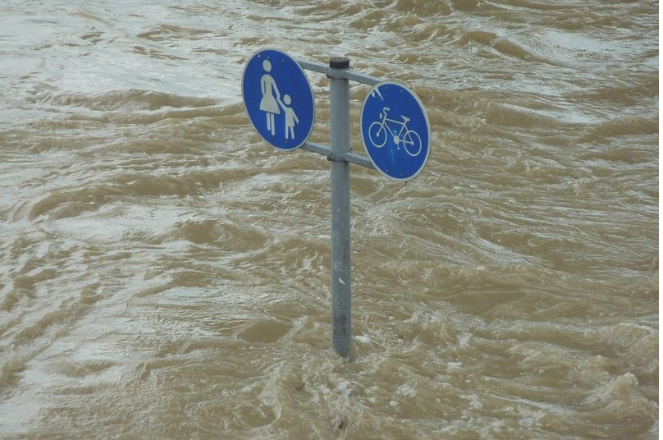
For decades, people have used rivers as waterways and have altered, straightened and constricted them for this purpose. At the same time, more and more land has been built over and sealed so that rainwater can no longer seep away on site. It runs off quickly and ends up in the rivers – increasing the risk of flooding. Last week, just such a flood disaster occurred in western Germany. More than 150 people died and many people are still missing.
“The first reflex then is often to say: Let’s raise the dike,” says Prof. Christian Albert, holder of the Chair of Environmental Analysis and Planning in Metropolitan Areas at Ruhr University Bochum (RUB), Germany. But such technical measures only shift the problem downstream. Together with his team, he has published a handbook on nature-based solutions for flood protection.
Green infrastructure
“We have to work with nature for our mutual benefit. Only then will solutions work in the long term,” the researcher emphasizes. The possibilities are numerous: one can reconnect dead stream branches by lowering river banks, thus recreating river floodplains that can be inundated during floods. You can ensure that wider marginal strips are created on the sides of areas that are used for agriculture, which reduces soil erosion by making the landscape more rugged. This makes it easier for water to seep away.
Green infrastructure is the name of the concept and it can consist of numerous individual measures. “It starts with a greened garage roof,” says Christian Albert. Gardens, garden plots, fields and parks also play a role.
Biodiversity
Along the way, the resulting landscapes have many positive effects: They promote biodiversity by providing habitats, mitigate heat waves in summer and bring green spaces to the urban population that can be used for leisure activities and recreation.

And yet, such solutions are not readily accepted. An analysis of the 2012 to 2015 flood risk management plans of the German states of Hesse, Lower Saxony and Saxony conducted by Albert’s team showed that nature-based solutions accounted for only nine percent of the measures proposed in the plans. (See also the flood risk plans from North Rhine-Westphalia and Baden-Württemberg).
There are indeed hurdles, Christian Albert acknowledges. Nature-based solutions need more space than technical ones and also need more time for implementation. They do not correspond to the habits of those involved in flood protection, for whom the navigability of rivers in accordance with legal requirements has been the top priority up to now. They sometimes force individuals to curtail their usual activities. “You have to talk to all these people and find solutions together,” Albert said, “and that takes effort.”

But it’s worth it, the researcher is convinced. “Once such a measure is implemented, people are often surprised at how beautiful it suddenly is,” he reports. With his team, the environmental planner also offers advice for practitioners as part of his scientific work.
Handbook
Together with his team, the environmental planner also offers practical advice as part of his scientific work. With computer support, for example, the team can identify areas that lend themselves to nature-based flood protection. “We want to understand how urban ecosystems function. This will allow us to identify deficits, find challenges that will arise in the face of climate change and develop strategies for livable cities for people and nature,” Albert says.
The research team has published a handbook and policy brief for practitioners based on its experience: Planning Nature-Based Solutions in Riverine Landscapes. A Handbook for Practice, Oekom-Verlag, Munich, 2021, 120 pages, ISBN 9783962383091, available online (German only).
Also of interest:
Communicating the risks linked to natural hazards
Increasing flood risk due to co-occurring storm surges and heavy precipitation in Northern Europe
Source: Rubin – Ruhr University Bochum, Germany







